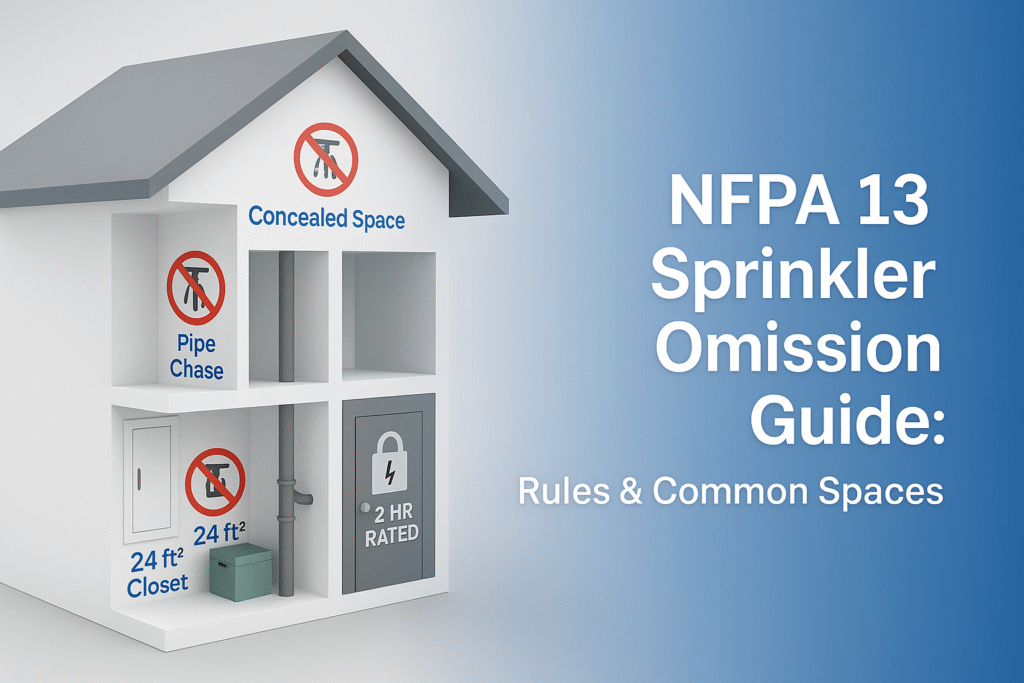Discover where sprinklers can be omitted as per NFPA 13! Learn about concealed spaces, closets, pipe chases, and more. Smart protection, smart design!


Discover where sprinklers can be omitted as per NFPA 13! Learn about concealed spaces, closets, pipe chases, and more. Smart protection, smart design!